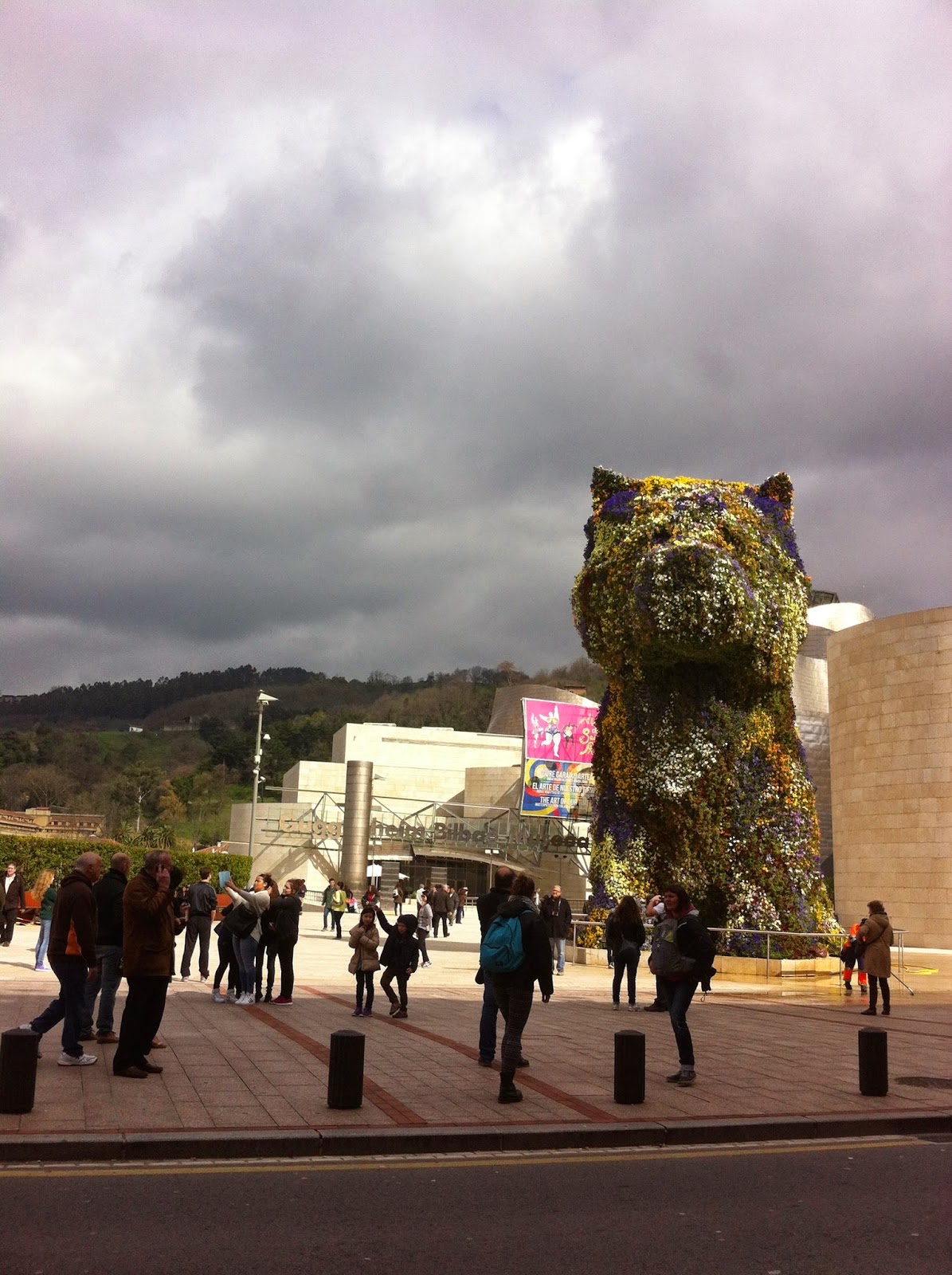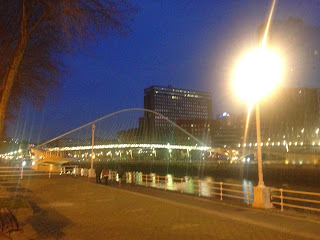 One of the most famous, and also most intreguing aspects of the Basque Country is the language spoken there. While el País Vasco is part of Spain, and Spanish is spoken everywhere, the region boasts it's own tongue Euskera. While this is also true in other regions of Spain (Galicia and Catalonia) what makes the Basque language unique is that it is the only language spoken in Western Europe that is not of Indo-European origin, and in fact, the origin is in itself a mystery. There are some theories as to where it came from, but none have been proven.
One of the most famous, and also most intreguing aspects of the Basque Country is the language spoken there. While el País Vasco is part of Spain, and Spanish is spoken everywhere, the region boasts it's own tongue Euskera. While this is also true in other regions of Spain (Galicia and Catalonia) what makes the Basque language unique is that it is the only language spoken in Western Europe that is not of Indo-European origin, and in fact, the origin is in itself a mystery. There are some theories as to where it came from, but none have been proven.
The largest city in the Basque Country is Bilbao, a city that is known for its factories and industrial history. However, the city has been undergoing a sort of "remodeling" over the last few decades, and the once grey, gloomy metropolitan area has now been infused with culture, color, and its very own personality.
Without a doubt, the most famous landmark in Biblao is the Guggenheim. Opened in 1997, the museum was designed by Frank Gehry, and offers a modern and sleek architecture that instantly changed the landscape of the once industrial area.
Surrounding the Guggenheim are various other art pieces, each designed by different artists. They all reflect a modern style, which will continue in the various exhibits in the museum.
 |
| Puppy! |
Inside you can find both permanent and temporary exhibits. Unfortunately the contents are somewhat underwhelming compared to the structure itself. However, entrance fees aren't overly priced (6-10 euro more or less depending on if you're a student or child, etc.) and while the exhibits were not comparable to what you might find in El Prado or La Reina Sofia in Madrid, the experience is still enjoyable, and the works are still worth seeing.
 |
| inside the Guggenheim |
 |
| A work of art inside the Guggenheim. I wasn't able to take pictures of many of the pieces |
Keeping in line with the modern, sleek feel this industrialized city boasts, the bridges that cross the River Nervión sprinkle in color, shape, and history.
Arguably, the most famous the Zubizuri (Basque for "white bridge") was designed by Calatrava, the same person who designed the Ciudad de Artes in Valencia. The bridge was first opened in 1997. While the bridge is impressive in its form, the practical purpose for which it was created, crossing it, presented a problem. Due to its slippery walkway, pedestrians were constantly loosing their footing, and falling! This was worsened by the rain (and in the north of Spain, rain is very common). After some debates with the designer, the city decided to add grip-strips, allowing for a more secure footing.
The second bridge I will mention is the Arcos Rojos. This bridge can be considered an external installation of the Guggenheim museum. Designed by Daniel Buren, the bridge was opened on the tenth anniversary of the museum.
Like almost every major city in Spain, Bilbao has its fair share of churches and cathedrals. The most well-know is the Basilica de Begoña. While reaching the top involves a walk up a hill, the trip is very much worth it. The church celebrates the patron saint of Biscay (the territory in which Bilbao is situated) the Virgin Begoña. Construction of the humble, yet elegant church began in the 16th century.
In the heart of the old zone of Bilbao, you will find the Catedral de Santiago. Built in the 14th-15th centuries, this cathedral celebrates Saint James. As Bilbao is a key stop on the Camino de Santiago, the name is fitting.
The old zone (or Casco Viejo) offers much more than the Cathedral. A simple stroll through the streets is enough to make you instantly fall in love with the Basque charm. The colorful buildings lining the streets, the signs in both Basque and Spanish, and the multitude of restaurants to choose from will make you lose yourself in the moment.
 |
| Beautiful colors and buildings |
The País Vasco is known for its gastronomy. Offering a wide range of food and drinks, visitors can enjoy a lovely sit-down meal, or hop from bar to bar, sampling the various tapas on display. Either way, the food is sure to please!
After a delicious lunch, a quick walk through the old zone will bring you to the funicular. A must-see when in Biblao. Transporting visitors to a breath-taking look-out, the Artxanda Funicular is very inexpensive, making it more than worth the stop. Bring your camera! The views from the top are perfect photo-ops!
 |
| On our way to the top! |
 |
| Breath-taking view! |
As if there isn't enough to see in Bilbao capital, one of the most famous landmarks is located just a short metro ride away, in the town of Portugalete. Literally meaning, "hanging bridge", the puente colgante transports both pedestrians and vehicles from Portugalete on one side of the Nervion River to Getxo on the other. The "hanging" part of the bridge is literal, as you have to board a suspended gondola. If you're feeling a little brave (and willing to pay the extra fee) you can also cross along the top, on foot.
Bilbao is an amazing city, that offers everything from culture, to cuisine, to modern art with a mixture of historic charm. There's something for everyone. One drawback that visitors will find (which is not unique to Biblao, but an aspect of the País Vasco in general) is the prices. Unlike many places in Spain, visiting this region will put a slight dent in your wallet. However, if you plan wisely, it's worth the cost, as the city will not disappoint.



















No comments:
Post a Comment